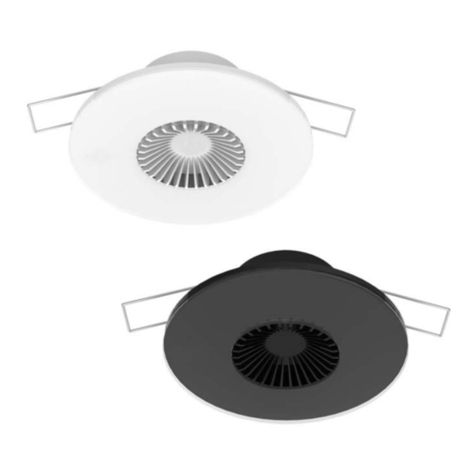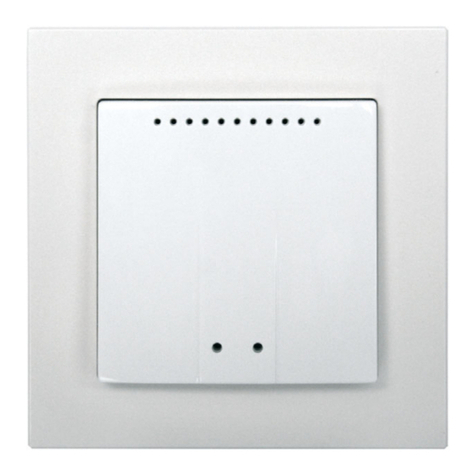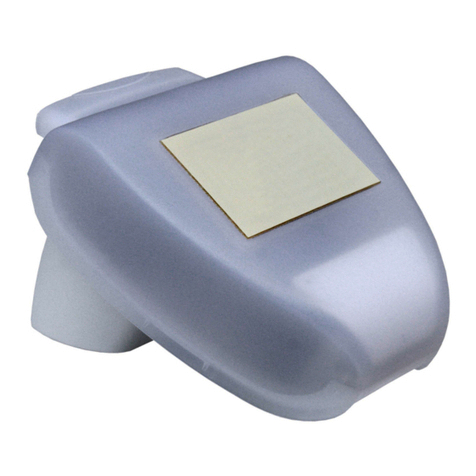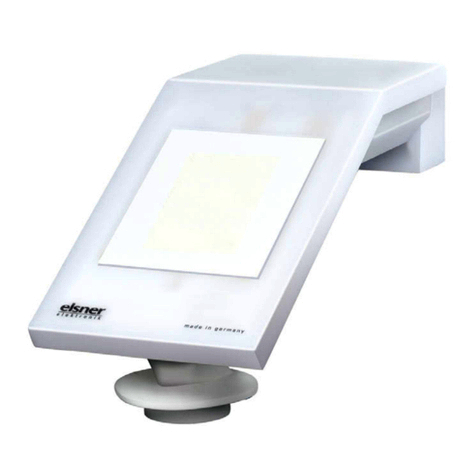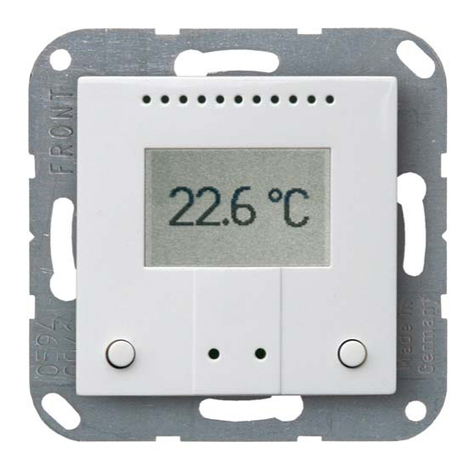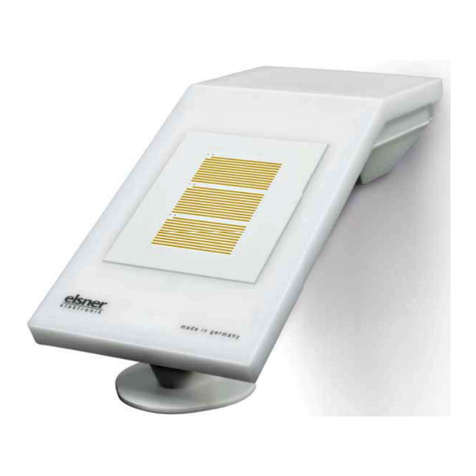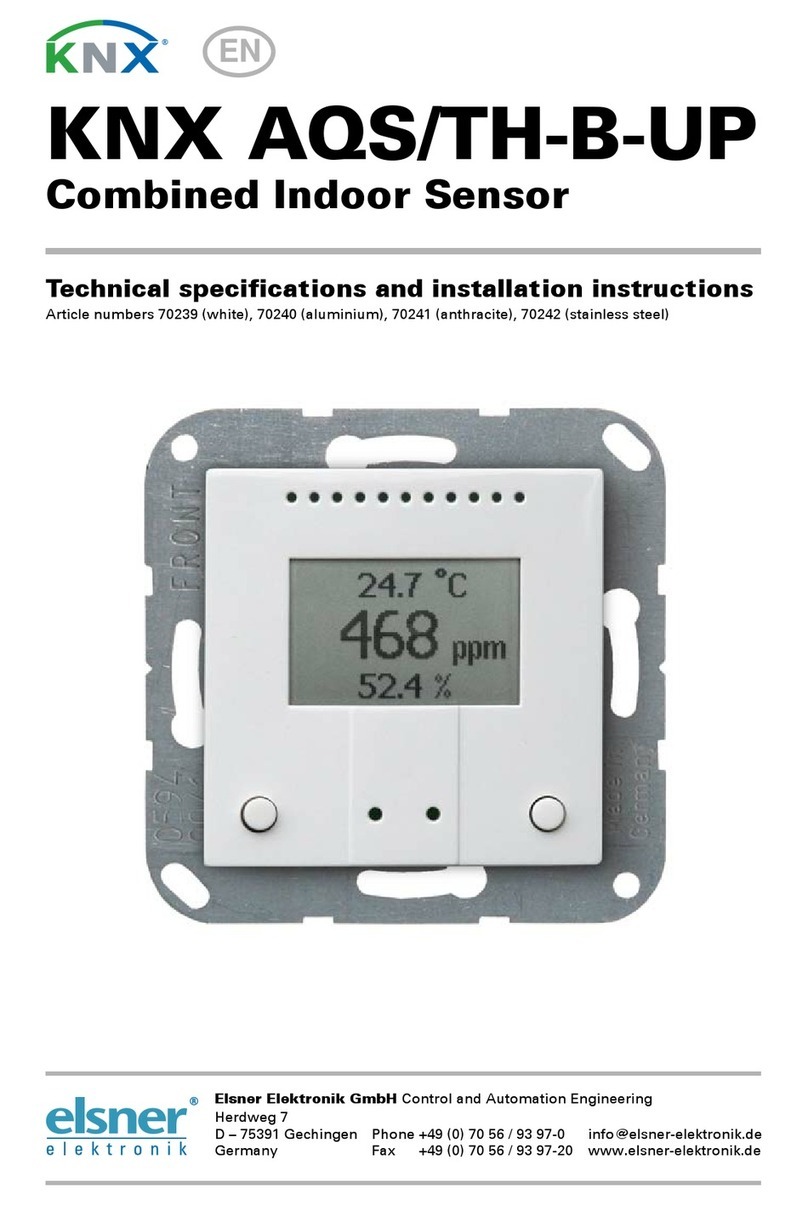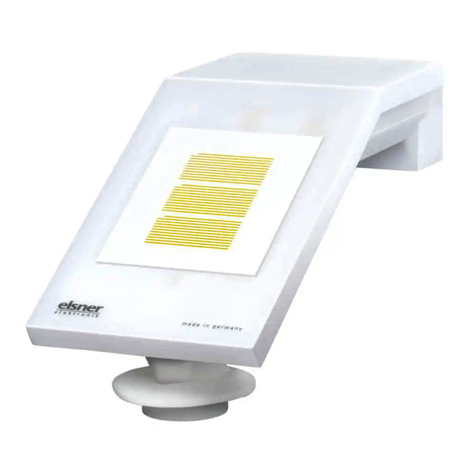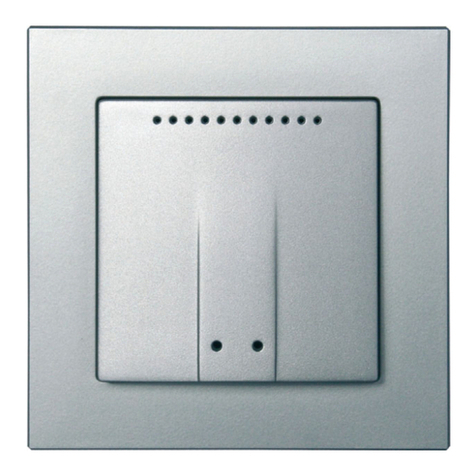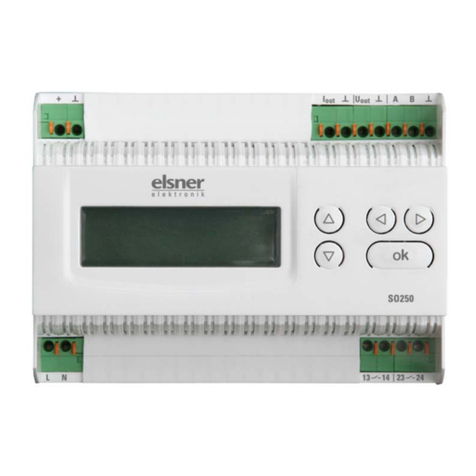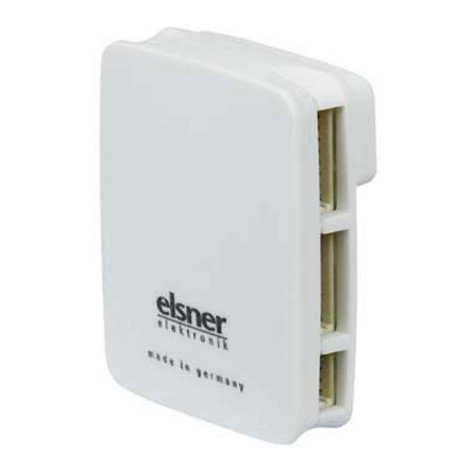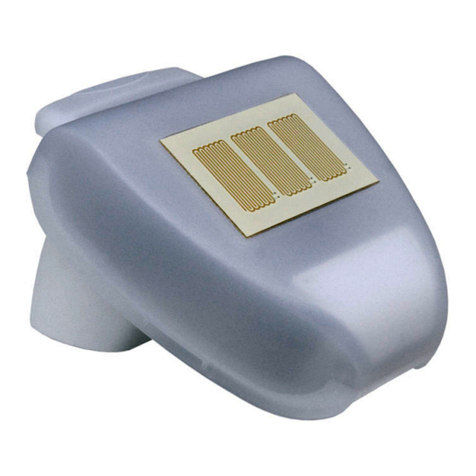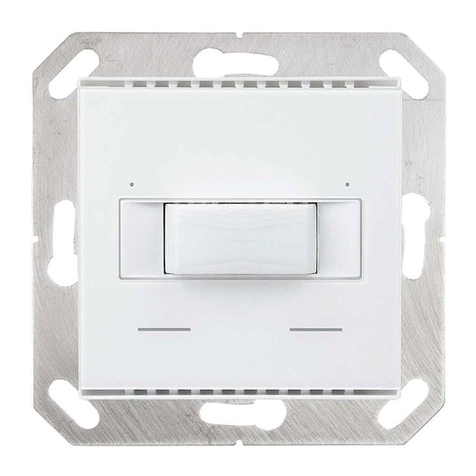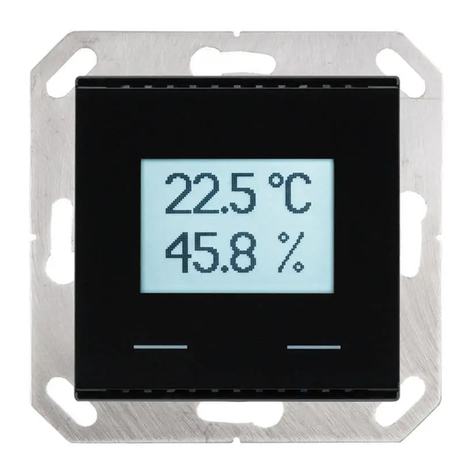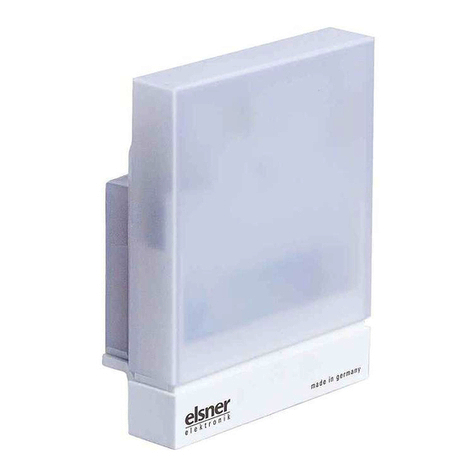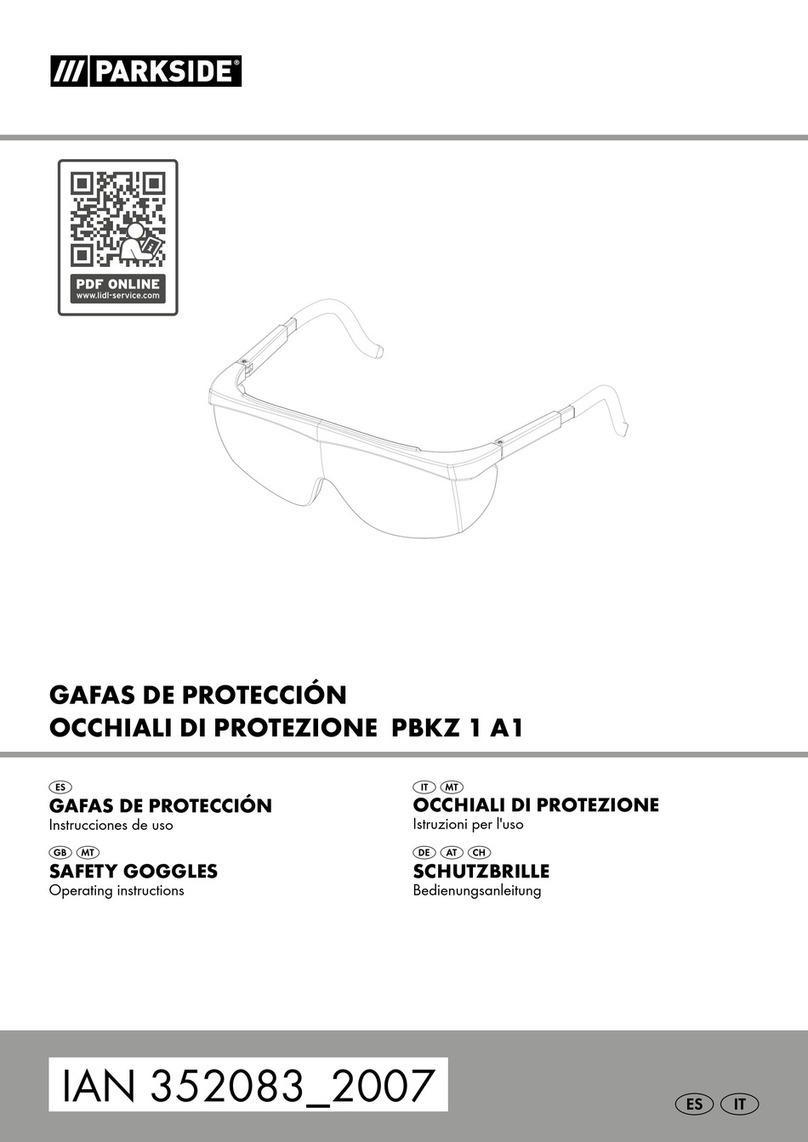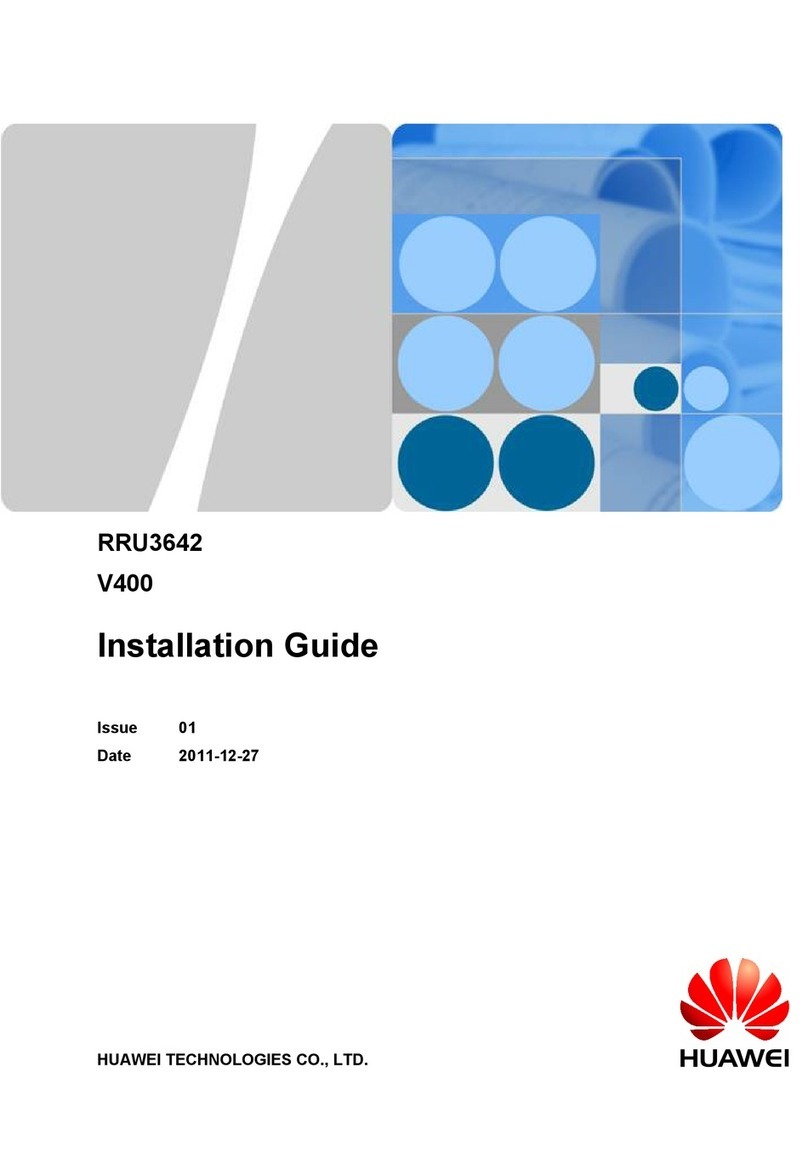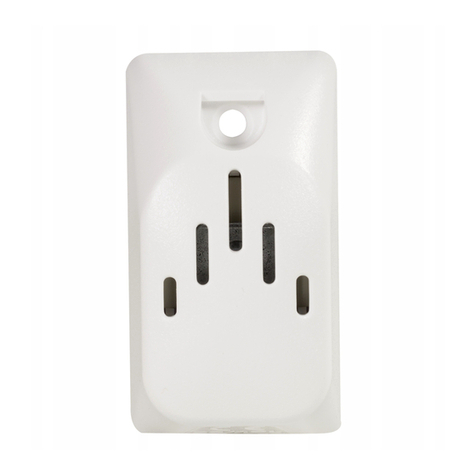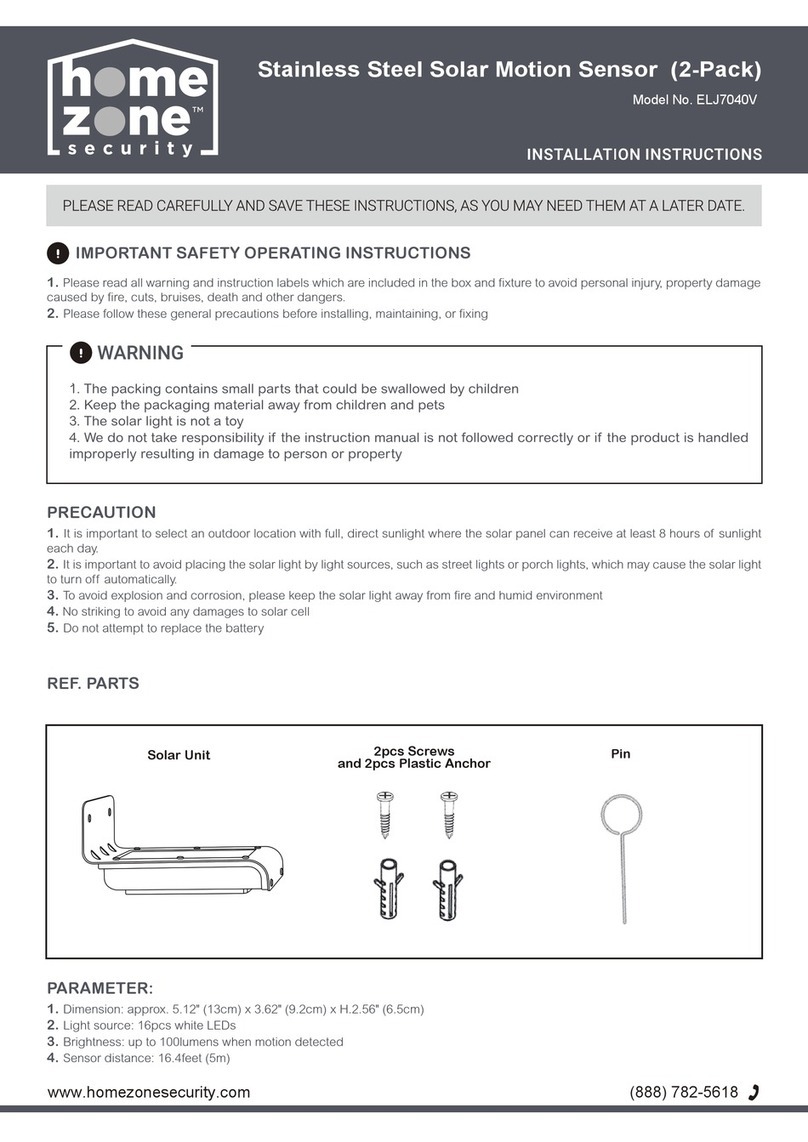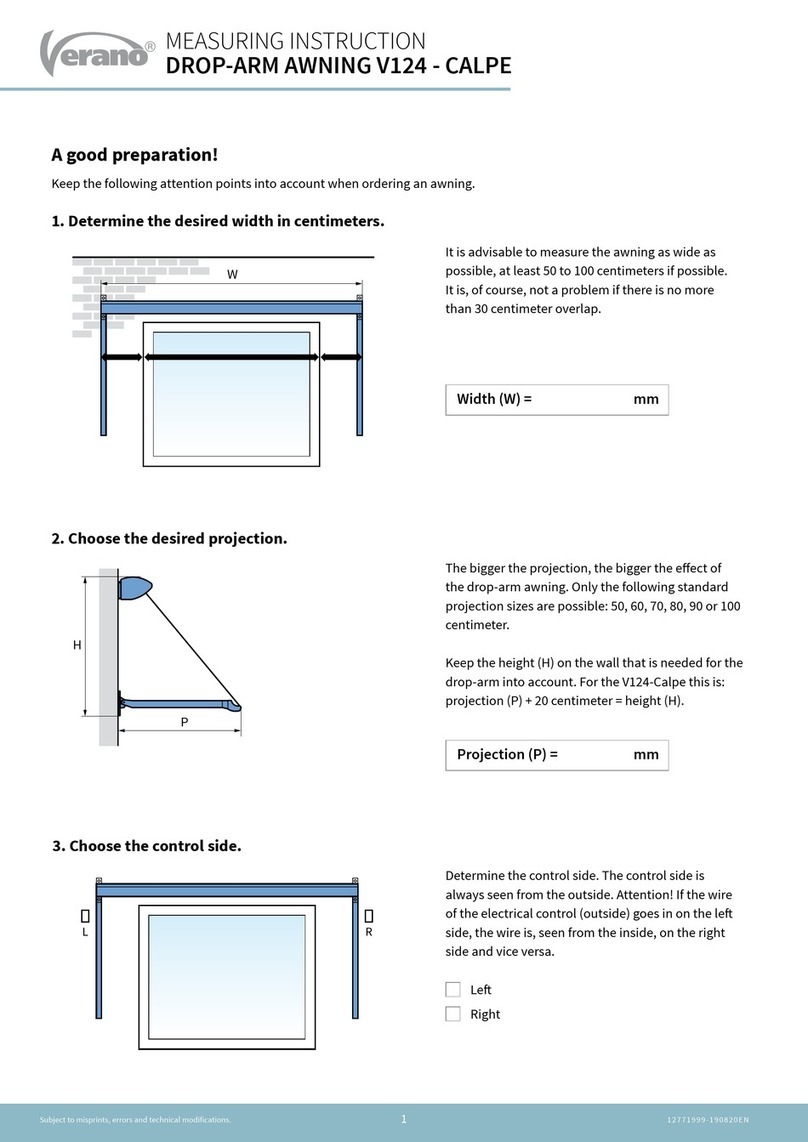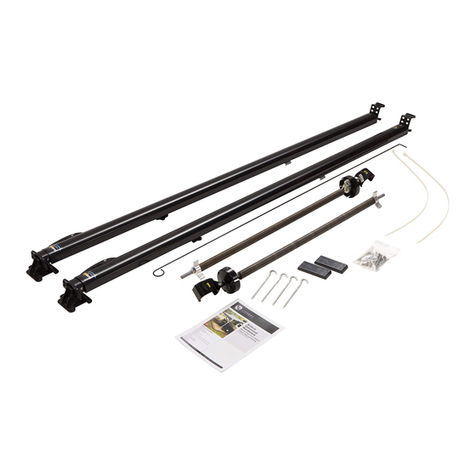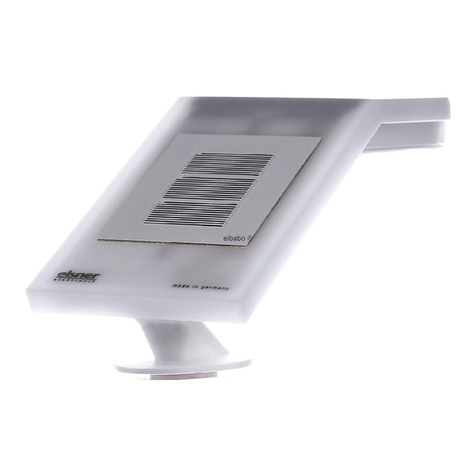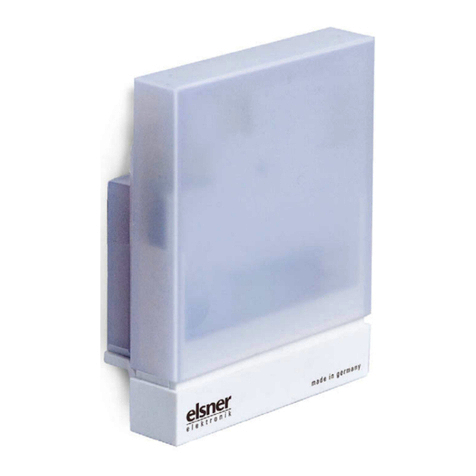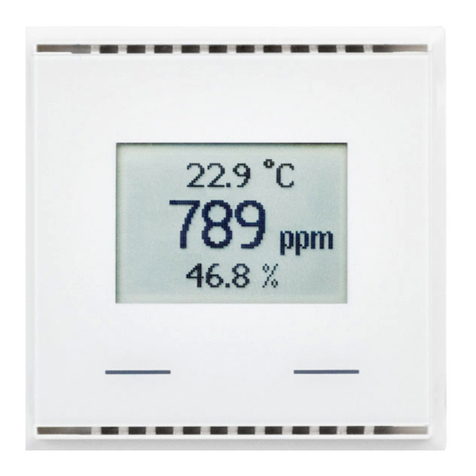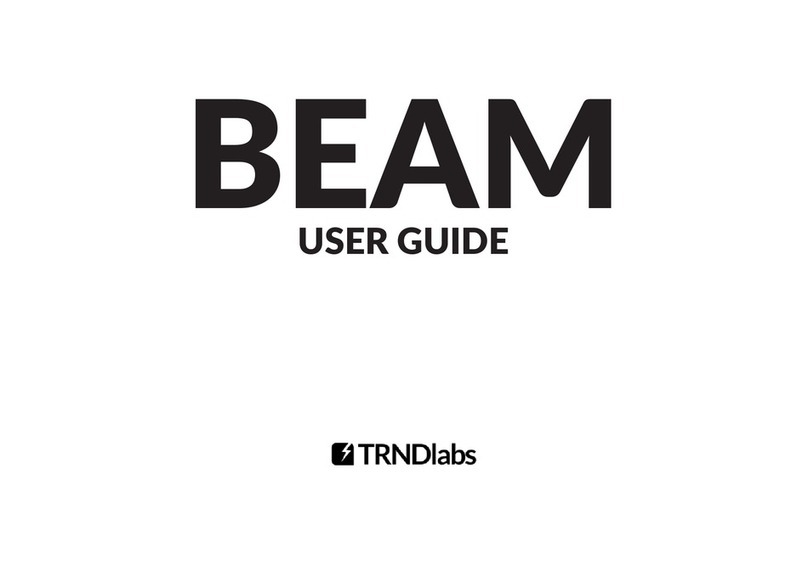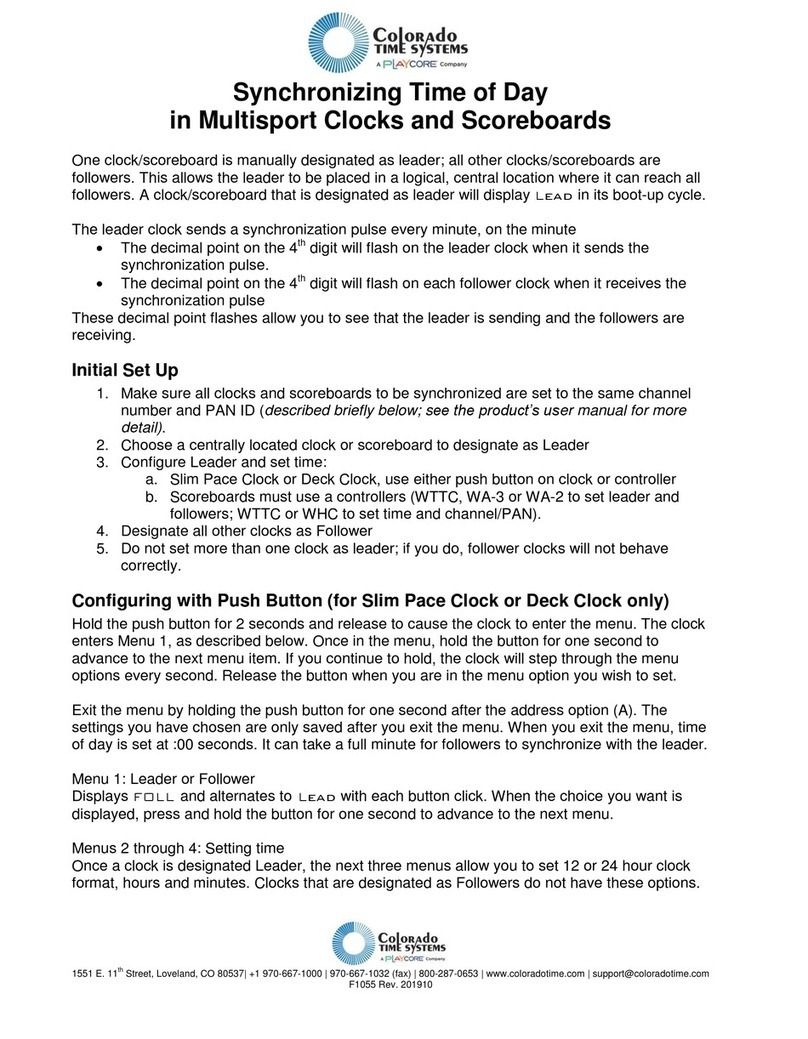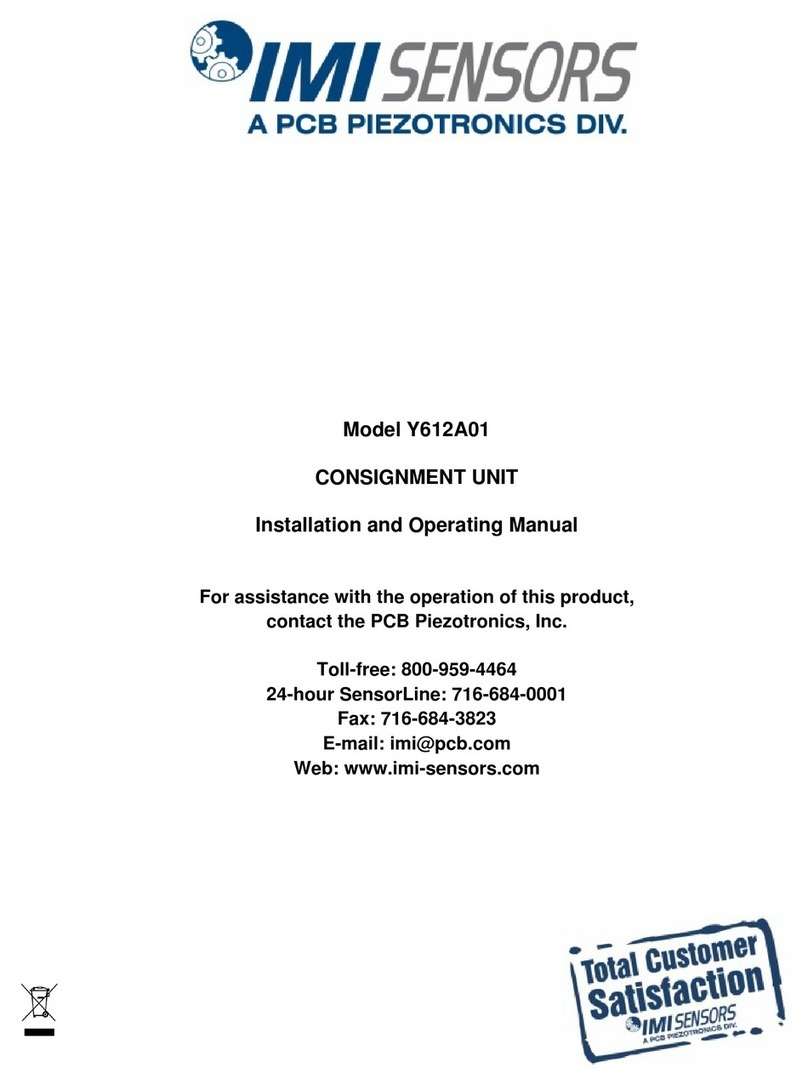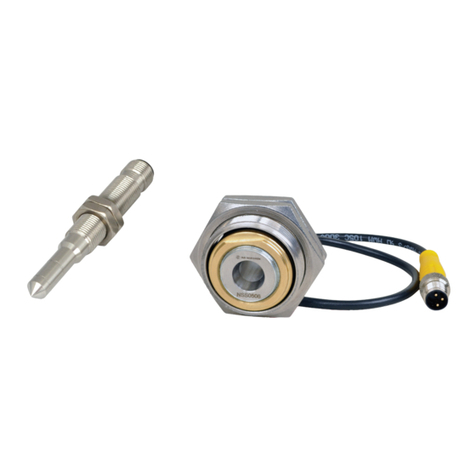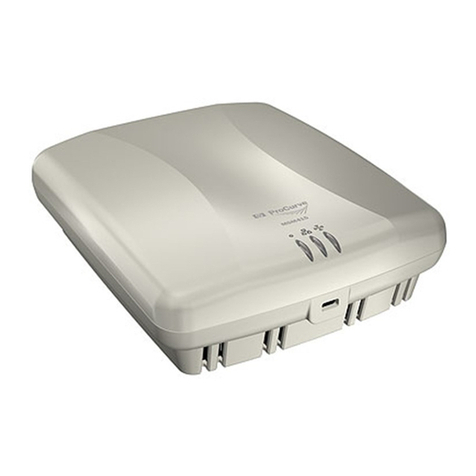
Brightness and Wind Sensor KNX LW 1
Brightness and Wind Sensor KNX LW • Version: 04.11.2020 • Technical changes and errors excepted. • Elsner Elektronik GmbH • Sohlengrund 16 • 75395 Ostelsheim • Germany • www.elsner-elektronik.de • Technical Service: +49 (0) 7033 / 30945-250
KNX LW
Brightness and Wind Sensor
Technical specifications and installation instructions
Item numbers
70128 (KNX LW 230 V AC), 70129 (KNX LW 20...32 V DC)
1. Description
The Brightness and Wind Sensor KNX LW measures the intensity of illumina-
tion and wind speed and transfers the values to the KNX system. Nine switching
outputs with adjustable threshold values as well as additional AND and OR logic
gates are available. The sensor system, the evaluation electronics and the electro-
nics of the bus connection are mounted in a compact housing.
Functions:
•Brightness measurement: The current light intensity is measured by a
sensor
•Wind measurement: The wind strength measurement takes place
electronically and thus noiselessly and reliably, even during hail, snow and
sub-zero temperatures. Even turbulent air and anabatic winds in the vicinity
of the weather station are recorded
•9 threshold values can be adjusted per parameter or via communication
objects
•8 AND and 8 OR logic gates with each 4 inputs. Every switching incident
as well as 8 logic inputs (in the form of communication objects) may be used
as inputs for the logic gates. The output of each gate may optionally be
configured as 1 bit or 2 x 8 bits
Configuration is made using the KNX software ETS. The product file can be dow-
nloaded from the Elsner Elektronik website on www.elsner-elektronik.de in the
“Service” menu.
1.1. Deliverables
• Sensor with combined wall/pole mounting
• 2x stainless steel installation band for pole installation
1.2. Technical specifications
The product conforms with the provisions of EU directives.
2. Installation and commissioning
2.1. Installation notes
Installation, testing, operational start-up and troubleshooting should
only be performed by an electrician.
DANGER!
Risk to life from live voltage (mains voltage)!
There are unprotected live components within the device.
• VDE regulations and national regulations are to be followed.
• Ensure that all lines to be assembled are free of voltage and take
precautions against accidental switching on.
• Do not use the device if it is damaged.
• Take the device or system out of service and secure it against
unintentional use, if it can be assumed, that risk-free operation
is no longer guaranteed.
The device is only to be used for the intended purpose described in this manual.
Any improper modification or failure to follow the operating instructions voids any
and all warranty and guarantee claims.
After unpacking the device, check it immediately for possible mechanical damage.
If it has been damaged in transport, inform the supplier immediately.
The device may only be used as a fixed-site installation; that means only when as-
sembled and after conclusion of all installation and operational start-up tasks and
only in the surroundings designated for it.
Elsner Elektronik is not liable for any changes in norms and standards which may
occur after publication of these operating instructions.
2.2. Location
Select an assembly location at the building where sun and wind may be collected
by the sensors unobstructedly. The sensor may not be shaded by the building or
for example by trees.
At least 60 cm of clearance must be left all round the device. This facilitates correct
wind speed measurement without eddies. The distance concurrently prevents
spray (raindrops hitting the device) or snow (snow penetration) from impairing the
measurement. It also does not allow birds to bite it.
2.3. Mounting of the sensor
2.3.1. Attaching the mount
The sensor comes with a combination wall/pole mount. The mount comes adhered
by adhesive strips to the rear side of the housing. Fasten the mount vertically onto
the wall or pole.
2.3.2. View of rear side and drill hole plan
2.3.3. Preparing the sensor
The sensor cover snaps in on the left and right along the bottom edge (see Fig.).
The cover of the 230V model is also screwed on top. Remove the cover. Proceed
carefully, so as not to pull off the wire connecting the PCB in the bottom part with
the cover (soldered cable connection in case of 230 V AC version, cable with plug
in case of 20...32 V DC version).
Lead the cable for the voltage supply and bus connection through the rubber seals
on the bottom of the device and connect Voltage L/N and Bus +/- to the terminals
provided.
Housing Plastic material
Colour White/translucent
Mounting On-wall
Degree of protection IP 44
Dimensions approx. 96 × 77 × 118 (W × H × D, mm)
Weight 230 V AC version approx. 240 g,
20...32 V DC version approx. 170 g
Ambient temperature Operation -30…+50°C, storage -30…+70°C
Operating voltage Available for 230 V AC or for 20...32 V DC
An appropriate power supply unit can be
obtained from Elsner Elektronik.
Cable cross-section Massive conductors of up to 1.5 mm² or con-
ductors with fine wires
Current 230 V AC version max. 20 mA,
20...32 V DC version:
max. 30 mA. max. 0,4 W.
residual ripple 10%
Data output KNX +/- bus terminal plug
Group addresses max. 254
Allocations max. 255
Communication objects 117
Measurement range
Wind
0...35 m/s
Resolution (wind) 0,1 m/s
Accuracy (wind) at ambient temperature -20…+50°C:
±22% of the measurement value when inci-
dent flow is from 45…315°
±15% of the measurement value when inci-
dent flow is from 90…270°
(Frontal incident flow corresponds to 180°)
Measurement range
brightness
0 lux … 150,000 lux
Resolution (brightness) 1 lux up to 300 lux
2 lux up to 1,000 lux
25 lux up to 150,000 lux
Accuracy (brightness) ±15% of the measurement value at 30 lux …
30,000 lux
Fig. 1
There must be at least 60 cm of space
below, to the sides and in front of the
sensor left from other elements (struc-
tures, construction parts, etc.).
60 cm
Fig. 2
The brightness/wind sensor must be
mounted on a vertical wall (or a pole).
Wall
or
pole
Fig. 3
The brightness/wind sensor must be
mounted in the horizontal transverse
direction (horizontally).
Horizontal
Fig. 4
When wall mounting: flat side on wall,
crescent-shaped collar upward.
Collar
Fig. 5
When pole mounting: curved side on po-
le, collar downward.
Collar
Fig. 6
Different mounting arms are available
from Elsner Elektronik as additional, op-
tional accessories for flexible installation
of the weather station on a wall, pole or
beam.
Example of the use of a mounting arm:
Due to flexible ball joints, the sensor can
be brought into ideal position.
Fig. 7
Example use of the hinge arm mounting:
Fitting to a pole with worm drive hose
clips
Slot hole 7,5 x 5 mm
Fig. 8 a+b
Drill hole plan
Dimensions of rear side
of housing with bra-
cket. Subject to change
for technical enhance-
ment.
Fig. 9
1 Screw-on cover (230V
device)
2 Cover snaps
3 Bottom part of housing
2
3
Unsnap cover
and remove upwards
1
Fig. 10
Remove the cable shielding under the
circuit board and only feed the con-
nector cables upwards through the
openings in the circuit board.
EN
